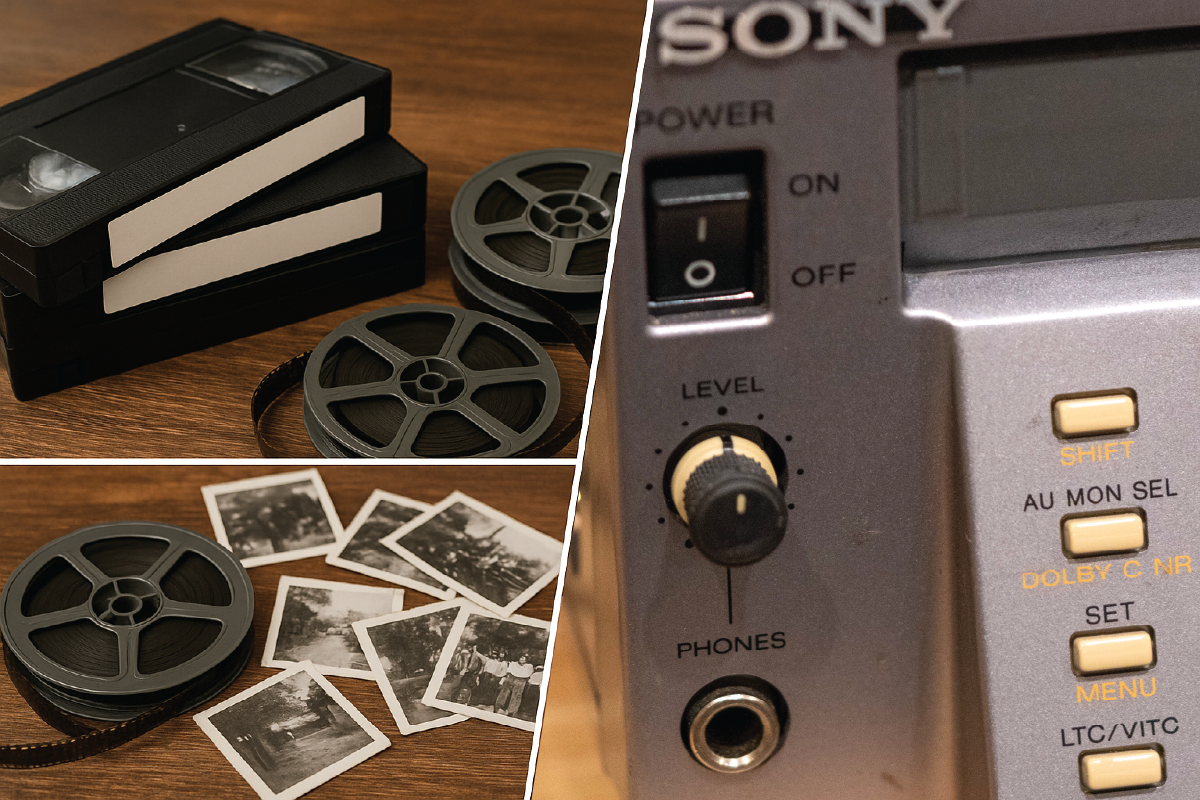A Ticking Clock on Broadcast History
Across the country, stations are facing tighter budgets, aging staff, and shelves lined with old tapes. Recent federal cuts to public broadcasting have made headlines—but the truth is, this challenge spans public, private, and commercial media alike. Whether you’re at a local news station, a regional affiliate, or a production company, odds are you have a backlog of analog broadcast tapes.
And here’s the thing: those tapes aren’t waiting patiently. Formats like Betacam, DVCPRO, MiniDV, and even VHS were never built for long-term storage. Their magnetic signals degrade. The machines to play them are vanishing. And unless you’ve already taken action, you may be closer than you realize to losing valuable content forever.
Your Archive Is More Than Just Footage
These old tapes aren’t just technical assets—they’re the DNA of your station. They contain:
- Years of coverage you can’t replicate
- Moments of local or national history
- Footage that could be reused or monetized
- Proof of performance for legal or compliance needs
- B-roll, interviews, and segments that could add richness to new stories
In short: your archive may be your most underutilized resource.
What Makes Digitization Urgent?
Digitizing your broadcast archive means more than just converting files—it’s about preserving context, quality, and access. But the urgency comes from three things:
- Tape decay is real and irreversible. Every year you wait increases the odds of dropout, sticky-shed syndrome, or total failure.
- Playback equipment is disappearing. Even if your tapes survive, finding a working deck (and someone who knows how to use it) is becoming harder by the day.
- Demand for archival footage is rising. Whether it’s for documentaries, retrospectives, or social content, people want to revisit the past. If your archive isn’t ready, you’re missing opportunities.
The following table is a list of some of the most common media types (and issues observed) coming from broadcast media digitizing efforts:
| DVCPRO25 / DVCPRO50 | Early digital tape formats used in news gathering, now obsolete. |
| MiniDV & DVCAM | Small digital video cassettes popular for field recording in the 1990s–2000s. |
| Digital Betacam (DigiBeta) | Once a gold-standard for TV masters, now aging. |
| MPEG IMX & Betacam SX | Niche broadcast tape formats that saw use in the 2000s. |
| Betacam SP & Analog Betacam | Analog tapes from the 1980s–90s that still hold countless hours of programming. |
| VHS (NTSC) & S-VHS | Consumer and prosumer video tapes (often containing off-air recordings or dubs of broadcasts). |
| Hi8 & Digital8 | Camcorder tapes that might include important footage shot in the field. |
| DVDs | Even optical media from the 2000s can suffer disc rot or become unreadable, despite being “digital”. |
| 1/4-inch Reel-to-Reel Audio | Open-reel tapes of radio broadcasts or audio logs that steadily degrade. |
| Audio Cassettes & Microcassettes: | Interviews, voice logs, and radio segments trapped on magnetic tapes |
Not Just for Libraries or Public Media
We’ve spoken with stations of all sizes—from large metro affiliates to university broadcasters to indie production companies. The story is often the same: “We’ve got a room full of tapes we’ve been meaning to deal with.”
Every station has footage that matters, and waiting for a perfect moment to start often means it never happens.
Where to Start
You don’t need to tackle everything at once. In fact, here’s a simple starter roadmap:
- Inventory what formats you have (even a rough list helps). Document the type of tape, approximate length, and age.
- Prioritize based on importance and condition/age.
- Identify playback risks (e.g. formats you no longer have equipment for).
- Decide what you can do in-house—and where to seek help.
If you’re not sure how to move forward, a consultation with an outside expert can bring clarity fast.
You Don’t Have to Figure It Out Alone
At Scanthology, we specialize in helping stations, studios, and institutions preserve their media legacies—whether that’s digitizing Betacam libraries, organizing raw MiniDV collections, or handling tricky formats like Digital8 and Hi8. We’re not here to sell you a quick fix—we’re here to be a long-term resource.
Because if we don’t preserve this content now, we may not get another chance.
